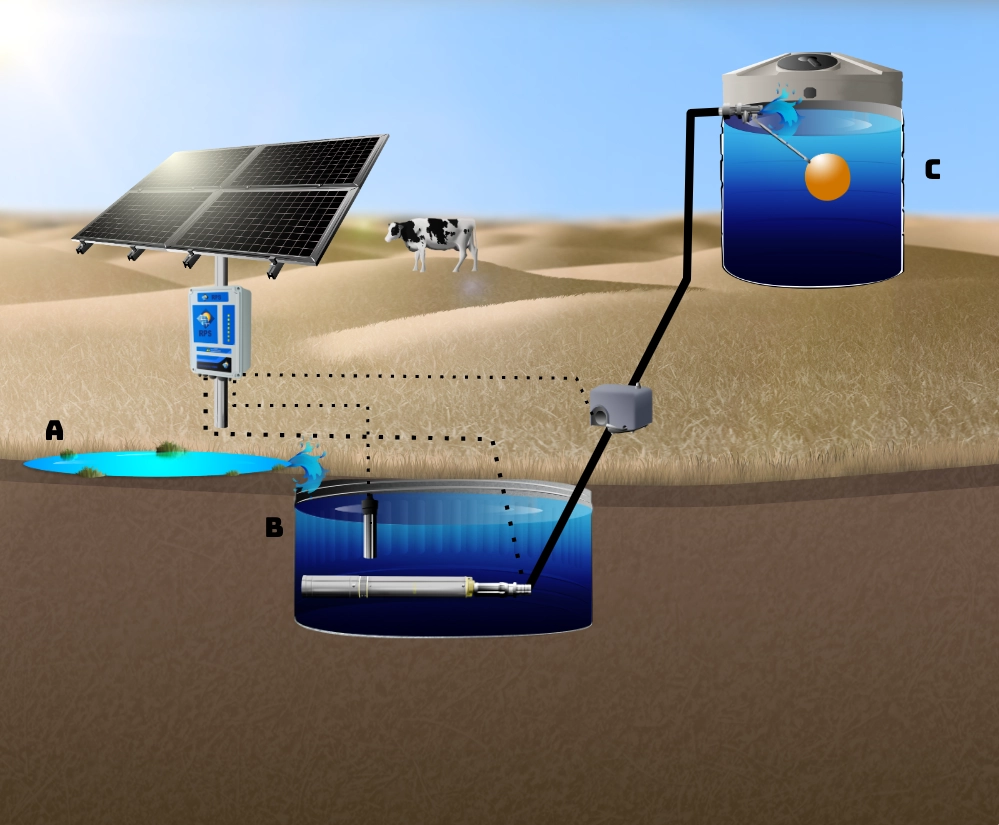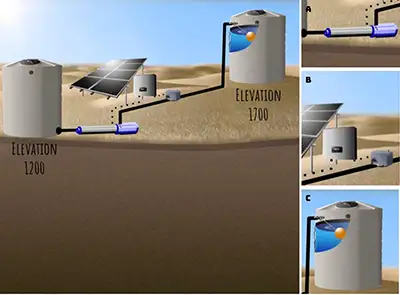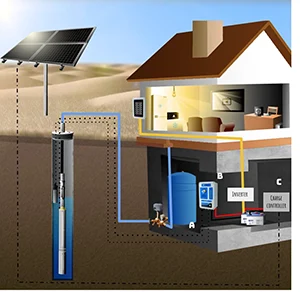Overflowing Spring into Sunken Tank, to Storage Tank with Pressure Shut Off

Low producing springs (A) are useful sources of water, but might need a little help collecting enough to pump. If your spring spills out onto the ground, flowing away downhill, we suggest burying a tank next to the well (B). The tank will collect water at night, meaning you’ll have a large store of water in the morning. Our helical submersible pumps (RPS 200, 400, 400N, 600 and 800), and even our Pro Series Deep systems, pump nice and slow so you won’t have to worry about cycling. A motor speed dial in the helical rotor charge controller allows you to easily adjust the rate of pumping.
You can then pump water to a variety of next steps like a stock tank, pressure tank, direct to drip lines, hoses, even unique setups like waterslides or fish cleaning stations. In this example, water is pumped to a faraway storage tank. Usually, we use a wet/dry tank full sensor wired directly to the control box. And there is a wet/dry sensor acting as a low water sensor just above the pump (B). But since the tank is a few hundred feet away, and no one want to trench wire that far, a pressure shut off system is used. Pressure shut off systems are comprised of the following three plumbing pieces….
1) A one way check valve to help build pressure in the line and prevent backflow. Attached directly off the pump and show in (B).
2) A reverse action pressure switch dropped into the pipeline to sense changes in pressure from the mechanical float valve. The reverse action pressure switch is still hardwired into the charge controller (shown underneath the solar panels), but is placed closer to the pump and therefore uses substantially less wire than a wet/dry sensor.
3) A mechanical float valve (C). If the tank fills up, the float rises and closes the pipeline, spiking line pressure and the reverse action pressure switch sends a small electrical pulse to the charge controller to turn the pump off. If the tank is emptying, the mechanical float drops to open the pipeline, line pressure releases and the reverse action pressure switch turns the pump on.



Nice set-up.
Do you carry or know of tanks that I can use?
I still need to locate spring as I’ve just bought this property. A solar pump would be great.
Another question: what tells the pump to not pump if low water level in spring containment tank?(maybe a float?)
I’m guessing 2 pumps, one to fill tank, one to send, in my case, 50-75yds up 10ft in elevation?
We just recommend getting the tanks locally, and if you’re using the water at all for drinking, get the NSF approved ones.
Theres either and external sensor or built in sensor in all of our pumps that will tell the system to turn off before the pumps runs dry, located just above the pump to anticipate falling water levels.
Give us a call with questions and we can go deeper into your personal sizing for that project!